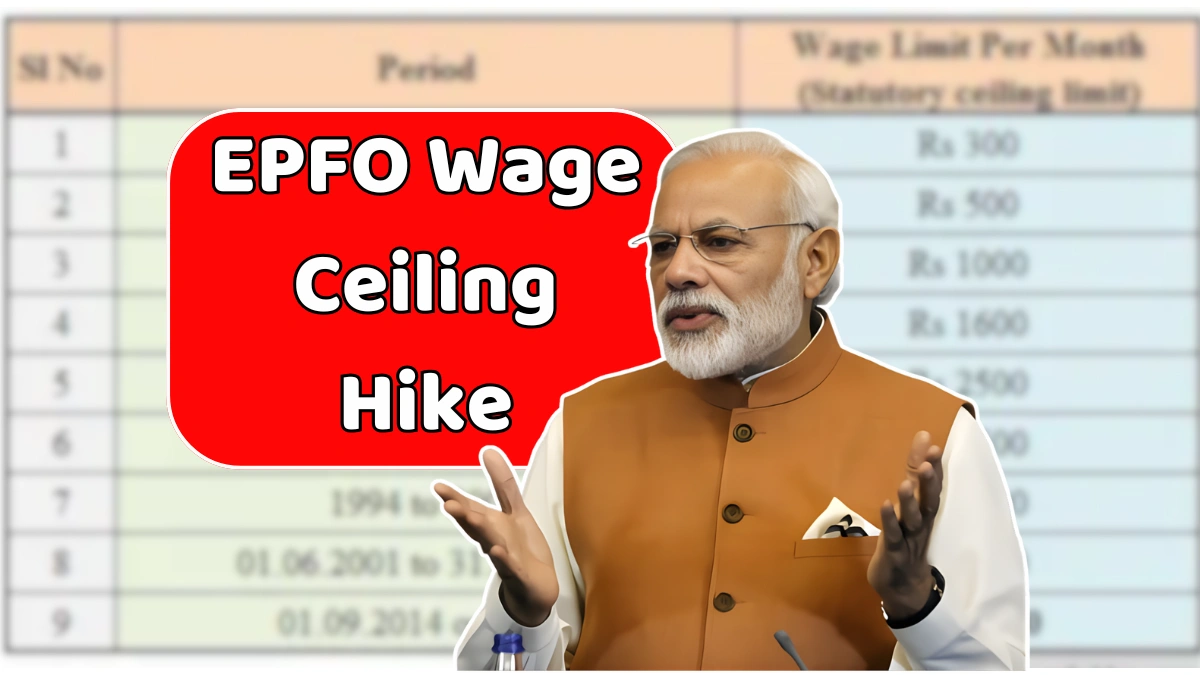If you’re a salaried employee earning just above ₹15,000 per month, your take-home pay and retirement savings could soon see a major change. The Employees’ Provident Fund Organisation (EPFO) is reportedly considering a proposal to increase the mandatory PF and pension coverage limit from ₹15,000 to ₹25,000 per month.
While this may appear like a minor policy revision, it could reshape India’s social security system, potentially bringing over 10 million additional workers under the provident fund and pension umbrella, according to preliminary assessments by the Labour Ministry.
What Is the EPFO Wage Ceiling Hike?
At present, only employees earning ₹15,000 or less in basic salary are required to be enrolled under the Employees’ Provident Fund (EPF) and the Employees’ Pension Scheme (EPS). Those earning above the limit can opt out — leaving a large section of the workforce without mandatory retirement protection.
If the ceiling is raised to ₹25,000, many more low- and middle-income employees, especially in metro cities and private enterprises, will automatically qualify for PF and pension benefits.
In simple terms, the government is expanding the safety net to cover workers who have been left out for years. Labour unions have long argued that the ₹15,000 threshold no longer reflects current wage structures or cost-of-living realities.
How This Proposal Could Affect You
If approved, the decision will bring both short-term trade-offs and long-term benefits for employees:
- Greater retirement security: You’ll build consistent savings through compulsory monthly PF contributions.
- Slightly reduced in-hand pay: Both employee and employer contribute 12% of basic pay each, meaning your immediate take-home may dip slightly.
- Stronger pension benefits: Over time, a larger PF corpus ensures higher post-retirement income and long-term financial stability.
Officials also note that this move could boost EPFO’s overall corpus, which already exceeds ₹26 lakh crore and serves over 76 million active members. A higher inflow would enhance the fund’s strength and interest-yielding potential.
Expert Opinions: A Positive but Challenging Reform
Industry experts have largely hailed this proposal as progressive and necessary.
Adil Ladha, Partner at Saraf and Partners, stated that raising the ceiling could reduce payroll manipulation and increase compliance transparency among employers.
However, some pushback is expected. According to Sujjain Talwar of Economic Laws Practice, many employees, particularly in lower-income groups, prefer higher in-hand salaries over mandatory deductions. Yet, with rising life expectancy and job uncertainty, long-term savings through EPF are becoming essential for financial resilience.
When Will the Final Decision Be Made?
The proposal is likely to be reviewed by the EPFO’s Central Board of Trustees in its next meeting, expected around December 2025 or January 2026.
If cleared, the new wage ceiling of ₹25,000 could take effect in the first half of 2026, marking one of the most significant expansions in India’s social security framework in recent times.
For millions of employees who currently fall outside the PF net, this change could finally bridge the gap between earning and long-term financial security.
Frequently Asked Questions
1. What is the current EPF wage ceiling?
The existing limit for mandatory EPF and EPS coverage is ₹15,000 per month in basic salary.
2. Who benefits from the proposed ₹25,000 ceiling?
Employees earning between ₹15,001 and ₹25,000 — especially those working in private firms and small industries — would be newly covered under EPFO’s schemes.
3. Will my take-home salary decrease?
Yes, slightly. Both employee and employer contribute 12% each of basic pay. While this lowers your immediate income, it ensures bigger savings and pension benefits over the long run.
Conclusion: The proposed EPFO wage ceiling hike to ₹25,000 could redefine retirement planning for India’s workforce. It’s a forward-looking move aimed at balancing present income with future security, ensuring that more salaried workers gain the financial protection they deserve.






